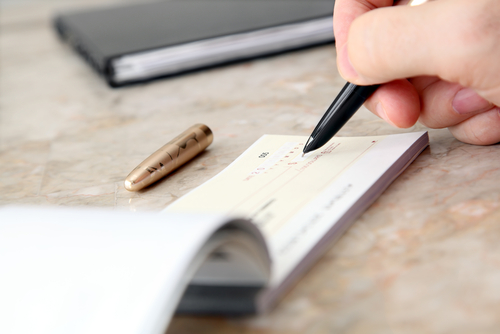Saving - Banking
Why the death of the cheque has been greatly exaggerated

Payment method data from the past decade suggests the cheque is in a state of incurable decline.
Most major retailers in the UK no longer accept cheques, and in 2011, UK banks collectively vowed to replace cheques with a “viable alternative” by October 2018 – although this pledge was eventually scrapped.
Nonetheless, Cheque & Credit Clearing Company (C&CCC) figures indicate that 644 million payments were made using a cheque in 2014 (a mere 2% of payments in 2014 overall), an 84% decrease from 1990, when four billion payments were made via cheque. The C&CCC believes this downward trend will continue in future, forecasting cheque payments will have fallen to 255 million a year by 2024.
Those who predict the impending death of cheques may be surprised that usage volumes will remain in the millions over the next decade. However, there are many reasons consumers still use cheques.
Every year, the C&CCC conducts research into cheque usage. Its most recent study suggests that of those who paid with cheque last year, 28% did so to pay a bill by post, 21% for services in the home, 16% for club/society membership, 16% for charitable donations, 12% for gifts, 12% for paying a friend or individual, 12% for their child’s schooling, 11% for personal services and 9% for paying over the counter.
The most popular rationales for paying via cheque were convenience and habit.
Cheque usage is also correlated with age – a staggering 65% of over 65s use cheques, compared to just 5% of 16-24s. However, the report highlighted a number of individual case studies that attest to the potential superiority of cheques over more modern payment methods.
In one instance, a small business took in £200,000 by cheque, and £250,000 by debit and credit card. Its managing director states that while the company received the £200,000 in full from cheques, processing debit and credit card transactions reduced the £250,000 by £5,000 due to processing and transaction fees. While the European Parliament has capped card transaction fees, businesses will still incur some costs.
The decline of cheques isn’t isolated to the UK – the method is falling in prominence the world over, but rates vary from country to country, and in some cases they remain comparatively popular. In France, for instance, 18% of payments are made by cheque. This is perhaps attributable to the legal protections given to those who receive payments using the method – it is a criminal offence in France to write a cheque without sufficient funds in your account (chèque sans provision), and perpetrators face hefty fines and being banned from writing a cheque for up to five years.
Mark Bowerman of the C&CCC believes the cheque is far from dead – rather, he notes, it is evolving.
“A project is currently underway to update the payment method for the 21st century,” he says.
“It’s called cheque imaging. As a consequence of new regulations in the Small, Business Enterprise and Employment Act, which received Royal Assent on 26th March 2015, images of cheques – rather than the carbon paper format – can be exchanged as legal tender by banks, eliminating the need for physical cheques to be transported round the country.”
This provision, which is speculatively scheduled to be implemented in July 2016, will allow for cheques to be processed almost instantly, meaning money can be made available for withdrawal much sooner than at present.
Bounced cheques will be more quickly identified too. It is even possible that banks could upgrade their mobile apps to offer consumers scanning facilities, allowing cheques to be paid in via smartphone or tablet, rather than visiting a bank. Could this innovation breathe new life into the cheque? Bowerman believes only time will tell – but an investigation of cheque imaging by C&CCC in March this year suggested it could well do.
[article_related_posts]